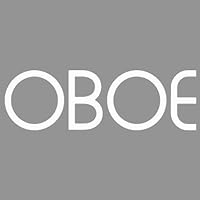When it comes to video and photo editing, the display of your laptop is very important. As an editor, you need a screen that shows accurate colors, sharp images and wide viewing angles. IPS, TN, and OLED are the most common types of displays used today. There are many advantages and disadvantages to each of these technologies. This guide will help you understand them so that you can make the best decision for your editing needs.
Understanding Display Technologies
Before we start comparing them, let’s talk about what IPS, TN, and OLED mean and how they affect your experience with editing photos or videos on a computer monitor.
What is IPS?
IPS stands for In-Plane Switching which is a type of screen technology used in liquid crystal displays (LCDs). It was created as an improvement over TN panels because it offers better color accuracy and wider viewing angles. When you need to have very accurate and bright colors then this would be the best choice for you.
What is TN?
TN means Twisted Nematic and it’s one of the earliest LCD technologies around. This kind of panel is known for being cheap to produce with fast response times making them popular among gamers who use monitors or people looking for affordable laptops with good specs. However, they don’t have great viewing angles or show colors accurately compared to IPS and OLED screens.
What is OLED?
OLED stands for Organic Light-Emitting Diode which is a modern type of display technology that uses organic compounds to create light when exposed to an electric current. Instead of needing a separate backlight like traditional LCDs, each pixel in OLED panels lights up individually resulting in deeper blacks and more vibrant hues across the spectrum. Because it provides better image quality, this system has gained popularity among creators working with high-end content.
Key Factors in Display Technology
When choosing a monitor for editing, these are the key considerations for graphic designers: Colour precision; Angles of view; Response times; Contrast ratios; and Lifespan. Each type of screen has its strong points that could greatly affect what you do during editing.
Color Accuracy
For editing photos and videos, it is critical that the screen you are using displays colors accurately. This means that when you look at an image on your monitor, the colors should be the same as they will appear in the final output – be it printed or shown on another monitor.
1. IPS Panels: These are known for their outstanding color accuracy and consistency. They can reproduce a wide range of colours which makes them perfect for tasks that require this.
2. TN Panels: Generally offer poor color accuracy compared to IPS or OLED screens. However, they may be sufficient for some basic editing work but are not recommended if high-quality output is needed.
3. OLED Panels: When it comes to color reproduction these excel because they can show very bright ‘true’ colors which are also accurate. Additionally, OLEDs can produce deep blacks and cover wide gamuts thus making this type suitable for high-end editing tasks.
Viewing Angles
The ability of a display to maintain clarity and color when seen from different positions refers to viewing angles.
1. IPS Panels: They have the best viewing angles out of the three technologies. If you were to look at a screen from either side, its colors would still be the same.
2. TN Panels: This type has poor viewing angles whereby if viewed from an angle, displays colors that are off or washed out will appear to be shifted.
3. OLED Panels: Just like IPS screens these also offer great viewing angles because their colors do not become dull even if you were to look at it from an extreme angle.
Response Time
Response time is the duration for a pixel to switch from one shade to another. Although it is mostly crucial for gaming, it can also affect video editing.
1. IPS Panels: They generally have slower response times than TN panels but are suitable for most editing tasks.
2. TN Panels: These are known for their speedy responses making them ideal for gaming. However, this advantage is not significant when it comes to editing.
3. OLED Panels: They usually have quick response times similar to TN panels without compromising on color accuracy.
Conclusion:
When it comes to your editing laptop, the choice of display technology depends on what you need and can afford. Most editing tasks are best performed using IPS displays since they have better color accuracy and wider viewing angles. However, OLED screens are more suitable for professional purposes because they provide higher contrast and richer colors although they may be costly and prone to burn-in.
HP has always been one step ahead in artificial intelligence and Elitebook 1040 G11 with Intel® vPro™ i7 processors, shows its dedication to providing powerful computing solutions. This laptop comes with an amazing 14-inch 2.8K display as well as AI features such as Smart Sense, Dynamic Voice Leveling, AI Noise Reduction, and Dynamic Color Tuning which make it unmatched for editing. As organizations adopt digital transformation, there will be a greater need for intelligent notebooks that can integrate seamlessly with AI.
Compare and view all the best video and photo editing laptop under 2 lakh





















